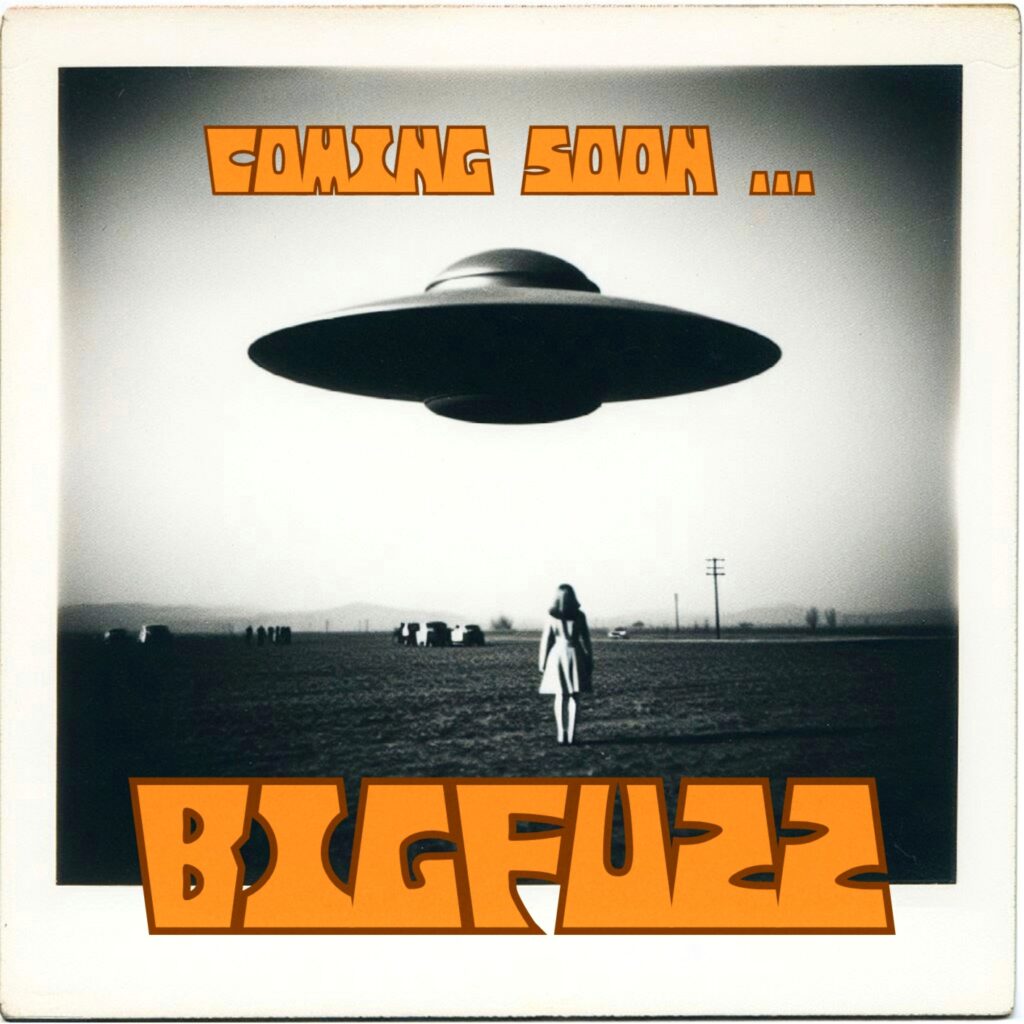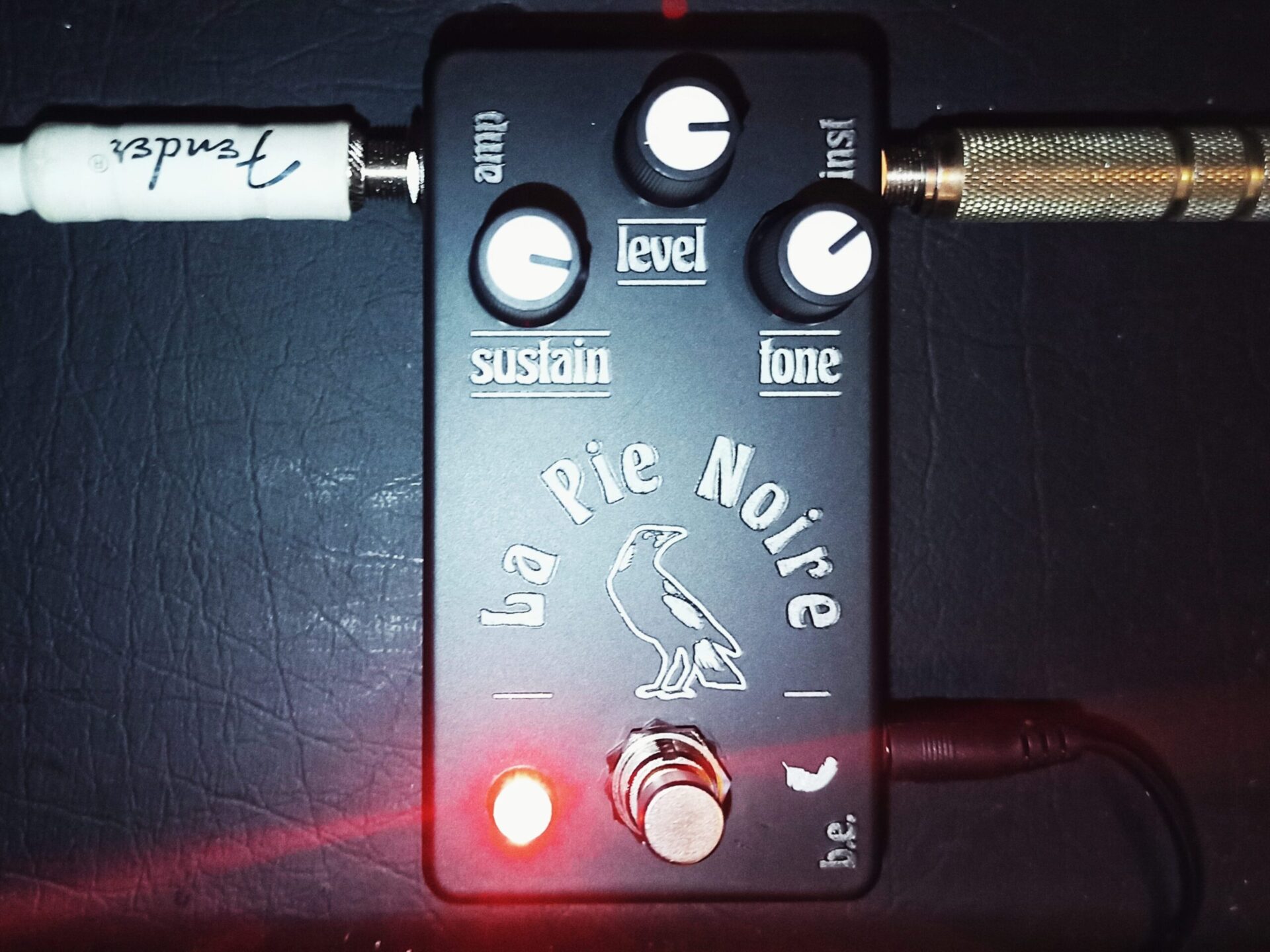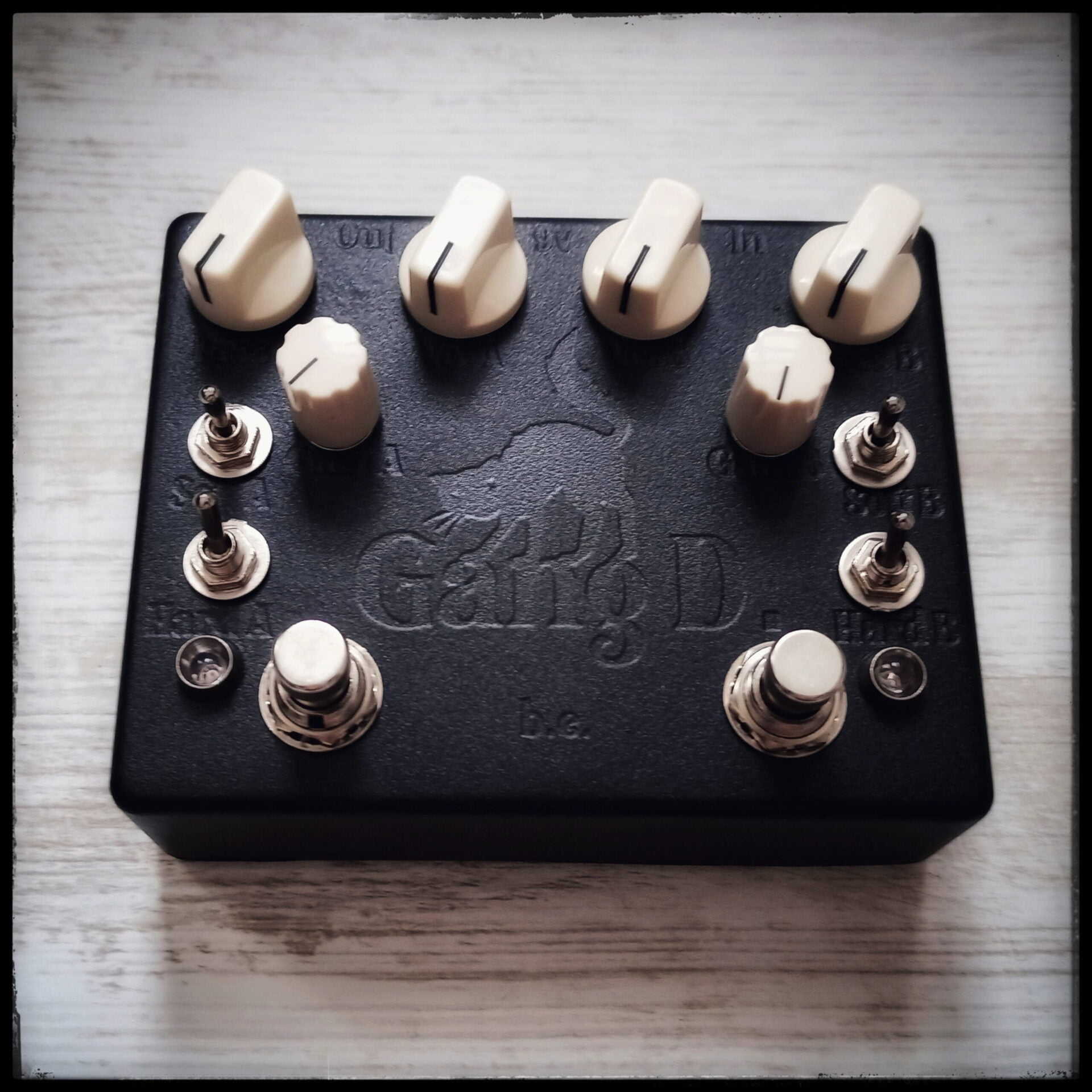
Bientôt !



Features:

A big thank you to Laurent Berthon for having made a complete test of the Gang D.!
It's on Youtube, and it's here :
The Rite is a fuzz pedal inspired by amp distortion Mosrite of the 70's, revised and adapted to receive germanium transistors.
Chaotic and versatile, it can be tamed with a cranked amp! The opposite of a transparent overdrive, it is made to move heaven and earth.
The transistors are Soviet germaniums from the 80's, more stable against thermal variations than their cousins from the 70's.
A fuzz without compromise!
Features:
Between 1965 and 1968, Baldwin Burns Ltd. produced a small number of guitar effects pedals. One of them was a germanium fuzz called Buzzaround.
According to legend, Gary Hurst designed this pedal around 1966/67 and the circuit is similar to that of the Tone Bender à trois potentiomètres.
The Baldwin Burns Buzzaround has three controls: Sustain, Balance (essentially a bias control for Q3) and Timbre (a volume/tone control, which is never completely off).
The Black Vulture Fuzz is an updated reinterpretation of the original Buzzaround, for guitar and bass. Instead of the original NKT213 germanium transistors, I use Soviet MP38A and GT404 germanium transistors.
These NPN transistors have the double advantage of being more stable in the presence of temperature changes and of allowing the use of the fuzz with a classic Boss type power supply (9v, - in the center).
In addition to the three potentiometers of the classic Buzzaround, I added an output level potentiometer, in order to allow a more precise control.
This effect is in my opinion a must have to accompany guitar and bass in the Stoner Rock register !

Ultratone E.Q. is the result of my collaboration with Piero Quintana, the man behind the excellent Quintana Dead Blues eXperience(https://www.pieroquintana.com/).
Part of our goal was to boost its characteristic fuzz without altering its personality.
The validated solution: an active equalizer to sculpt the frequency response of the incoming signal.
In addition to being able to give more punch to the bass and/or treble, Ultratone E.Q. allows for targeted emphasis of a frequency band, with the effect at the edges of the band being controllable for a smoother or more abrupt rendition.
In more technical terms, we have a high pass filter, a low pass filter and a configurable band pass filter. These filters are active, they do not rely on frequency attenuation (passive) but on their amplification.
Internally the amplifier operates at 18 volts, which provides a large headroom to avoid distortion.
This pedal is ideal for boosting breaks and solos while remaining transparent. It is also a perfect effect to add to a vintage fuzz that is full of gain but lacks volume (I personally use it happily after a Univox Superfuzz).
The desire to create a double overdrive for guitar came to me after a meeting with the talented musician Zacharie Defaut, who gave me a demonstration of the possibilities offered by the Duellist of King Tone Guitar. Duellist of King Tone Guitar.
Being able to put two overdrives of very similar tones in series is ideal for a live performer. One overdrive for the verse/chorus passages (with the possibility to subtly vary the sound by selecting the first or second overdrive of the pedal) and the cumulative power of two overdrives for breaks and solos
The existing pedals of the same type (Duellist, King of Tone, ...) are variations of the Tube Screamer or the Marshall BluesBreaker. I chose to use a different overdrive and to add the possibility to vary the clipping for more versatility. King of Tone...) include variations of the Tube Screamer or the Marshall BluesBreaker. I chose to use a different overdrive and to add the possibility to vary the clipping for more versatility.
The name Gang D. comes from the stereo "dual gang" knobs, which the use of two similar effects made me think of. It is a pedal with two almost identical overdrives characterized by their transparency, which respects all the nuances of the guitarist's playing. The guitar tones are preserved, with the addition of a Tweed-like growl when the gain is increased. The result is very Rock'n'roll!

Features: